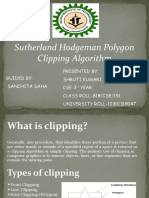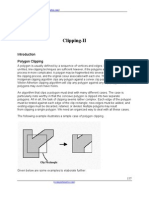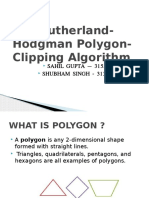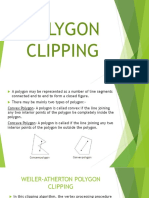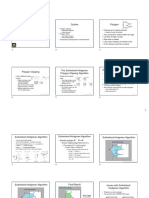0% found this document useful (0 votes)
45 views4 pagesCGL Practical 9
The document outlines the implementation of the Cohen Sutherland Hodgeman polygon clipping algorithm for clipping polygons with respect to a viewport and window using mouse and keyboard interfaces. It explains the theory behind polygon clipping, detailing the process of selecting visible portions of a polygon and the divide-and-conquer strategy used in the algorithm. The conclusion emphasizes the successful study and implementation of the algorithm.
Uploaded by
Deepika WalanjkarCopyright
© © All Rights Reserved
We take content rights seriously. If you suspect this is your content, claim it here.
Available Formats
Download as DOCX, PDF, TXT or read online on Scribd
0% found this document useful (0 votes)
45 views4 pagesCGL Practical 9
The document outlines the implementation of the Cohen Sutherland Hodgeman polygon clipping algorithm for clipping polygons with respect to a viewport and window using mouse and keyboard interfaces. It explains the theory behind polygon clipping, detailing the process of selecting visible portions of a polygon and the divide-and-conquer strategy used in the algorithm. The conclusion emphasizes the successful study and implementation of the algorithm.
Uploaded by
Deepika WalanjkarCopyright
© © All Rights Reserved
We take content rights seriously. If you suspect this is your content, claim it here.
Available Formats
Download as DOCX, PDF, TXT or read online on Scribd
/ 4
